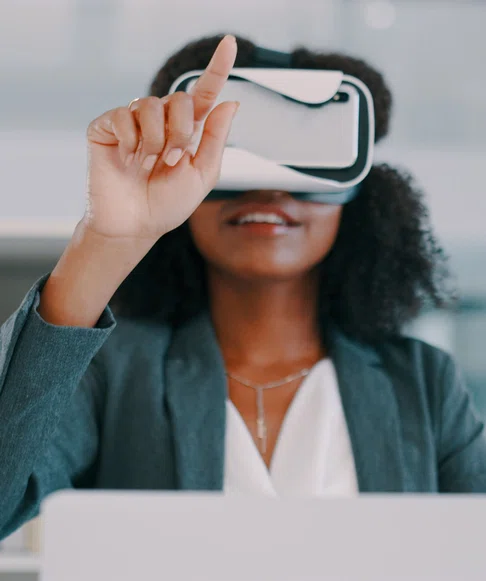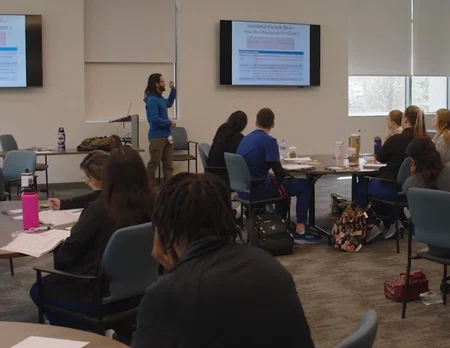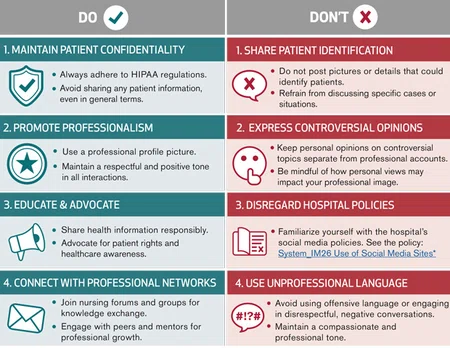© 2024. Houston Methodist, Houston, TX. All rights reserved.


In this
issue

WELCOME
NURSING SCIENCE

Prioritizing Nurse Perspectives in Technology Design

Brand Image of the Nursing Profession

Meet Houston Methodist’s Newest Nurse Scientists!
EDUCATION
PRACTICE

Unlocking Excellence: Practicing at the Top of Your License

Compassionate Care: Supporting and Caring for Nurses
PROFESSIONAL DEVELOPMENT
MAGNET
FROM OUR TEAMS

ABOUT DISCOVERN
EDUCATION
The Future of Learning
By Hsin-Mei Chen, PhD, MBA
By Hsin-Mei Chen, PhD, MBA

When most people think of education, they envision learning in classroom settings such as high school or college.
Today, however, education has been transformed to include several diverse modalities through the utilization of technology. Education now has many other approaches, including hands-on skills, virtual classes, videos and more.
When I took a multimedia class for my education degree more than 20 years ago, we learned how to make videos. I felt very fancy when video editing on a computer rather than the traditional method of cutting and taping film. Yes, you had to use scissors to physically cut the videotape and piece the clips you liked together. In the 1990s, adding educational videos to the traditional classroom setting provided a fresh learning experience and was considered advanced multimedia education.
Today, anyone can do photography or videography with a simple click on their phone. Image editing does not need professional software. Class content can be voice-generated. Artificial intelligence (AI) can even generate the initial content when prompted. The recently published Sora can generate videos when text descriptions are provided. Making attractive content is no longer difficult. The real challenge now becomes having the constant attention of the audience. A study by Microsoft claims that the attention span of digital content decreased from 12 seconds to 8 seconds after the mobile revolution of the 2000s. Although it cannot fully translate to class learning, most instructors will agree students probably have about 10-15 minutes of attention span in classes (Bradbury, 2016).
The pandemic in 2019 fully converted people's perspective on virtual learning. Online learning used to be an afterthought when needing any education. Now, it is the norm. Virtual learning allows people to learn any topic anywhere and at any time. Learners appreciate the flexibility of learning, although they realize that home might not be the best place to learn due to disruptions and the lack of learning environments (Bdair, 2021). The "2024 Learning Needs Assessment" from the Center for Nursing Research, Education, and Practice (CNREP) shows that 28% of learners prefer virtual learning, while 22% want the learning to be hybrid with both classroom and virtual options. Our education department has adjusted to the trends and needs of the learner. The American Heart Association program is a fantastic example of this adaptation. We asked clinicians to take didactic portions online and then come to us for the hands-on skills, thereby providing hybrid learning. This learning modality has shown significant satisfaction.
The future of education is more than exciting with virtual reality (VR) and augmented reality (AR). VR and AR allow learners to become immersed in the specific simulation without interruption. In addition, it is also more cost-effective than traditional training, which requires space, labor and equipment. Although the concept is emerging in healthcare, VR and AR have already been used for employee training in many other industries, especially for those in high-risk occupations. You might have seen simulated aviation training for pilots. VR and AR provide a venue to simulate some situations that are hard to replicate in reality. These technologies allow learners to attempt high-risk skills while enhancing their knowledge before performing the task on a live patient. AI advancements can further improve VR and AR. For example, imagine being able to talk to an AI-generated patient to enhance communication skills and narration of care.
The future of learning is no longer sitting at a desk in a classroom. People can obtain knowledge and skills from diverse resources. Learning is individualized. Learners can learn anything, anytime, in any modality. More importantly, innovative education can improve learning outcomes to enhance patient care quality.
References:
Bdair, IA, Nursing students' and faculty members' perspectives about online learning during COVID-19 pandemic: A qualitative study, (2021), Teaching and Learning in Nursing, 16(3):220-226.









